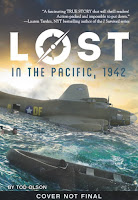Trying to impart our love for 37 books in 1 1/2 hours is much, much harder than you'd think. Last Friday veteran Bear Ponder Carrie Fitz, U-32 Librarian Meg Allison and Jane Knight (the latter two are Dorothy Canfield Fisher committee members) burned the adrenaline trying to make sure each book got equal play time. The books that were highlighted were books that did not get chosen for the 2016-2017 Dorothy Canfield Fisher List-- some books weren't eligible because their authors were not from the U.S. or Canada. But many others were eligible and well-liked by the Canfield Fisher committee, yet still did not find their place on the list.
Often times there are two or more books in contention for a slot on the list that have similar themes and so only one is chosen to represent that theme. Other potential nominees, like Boy In the Black Suit (by Jason Reynolds) or Paper Hearts (by Meg Wiviott) simply feel a touch too old for the list.
We started off the morning with a round-up of wonderful books by Vermont authors that were published last year. (Those books are noted as such on the book list in the 'notes' section). Both non-fiction and fiction were covered, and instead of killing your eyesight with a tediously long review of each book, we are making the book list available to view with notes.
A few of our participants shared their memorable titles of 2015-2016, which included Book Scavenger by Jennifer Chambliss Bertman, a middle grade selection for lovers of Mr. Lemoncello. The Epic series by Brandon Sanderson was also highly touted for its high-action appeal to middle school and high school (boys especially) students who love Rick Riordan or The Maze Runner series and are ready for something more complex.
The new 2016-2017 Canfield Fisher books were also prominently displayed and we lightly touched upon each by genre and specific kid appeal.
If you missed this Materials Review, we host one each season and they are super fun and (we think) worth your Friday morning.
For a peek into past Materials Review Sessions:
And a couple handy lists to of notable books being published in 2016:
Notable Children's Books of 2016 (Publisher's Weekly)
A Literary Calendar of Children's Books 2016 (this one is really fun-- The Guardian)
******************
We will be hard at work plotting for our Fall Events Schedule over the summer and we'd like to hear from YOU! Got suggestions, ideas or something you want to know more about? Contact Jane at jane@bearpondbooks.com.
And....don't miss our last event of the spring!
Saturday, April 9th 11:00 am - Noon
Poetry with VT Poet Laureate Chard DeNiord
Vermont’s new Poet Laureate Chard DeNiord has a goal of getting schools across Vermont involved in poetry. He’s been involved in many poetry organizations, including the Next Stage Speaks initiative that he founded. He’ll speak about his experiences with Vermont students, in Vermont schools, and what opportunities there are for local teachers and librarians to involve kids in poetry.





